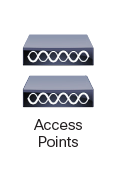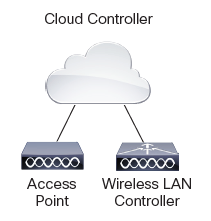Cisco launched new 400G Ethernet switches.
The new 400G Ethernet switches fall into two camps, two boxes in the Nexus 9000 family aimed at large-enterprise network customers and two in the 3400-S class targeted at high-bandwidth hyperscale users.
These switches pave the way for Terabit Ethernet switching to become a mainstream technology, wrote Thomas Scheiberote, Cisco vice president of product management, Data Center Networking.
Cisco says 400G will let webscale customers, data-center and 5G-mobile operators create more powerful networks more cost-effectively while offering customers with four times the bandwidth and scale of current networks.
The bandwidth and scale needed for 400G is evident, because:
- There will be 20 billion to 30 billion online IoT devices in the world through this decade.
- Users will own more than 25 million 5G-capable devices by 2021 and more than 80 percent of all IP traffic will be bandwidth-hungry, latency-sensitive video content.
- By 2021 hyperscale data centers will grow from 338 in number at the end of 2016 to 628, representing 53 percent of all installed data-center servers by 2021.
Enterprise users may be most interested in the two new Nexus 9300GX boxes, which Cisco says expand its overarching Application Centric Infrastructure (ACI) and its intent-based networking data-center designs, which in real time can identify and react to changing network conditions.
ACI brings with it support for Cisco products such as the Tetration Analytics platform, which collects all manner of telemetry information from Cisco and non-Cisco devices on the network. The system then uses machine learning and behavior analysis to provide network administrators a greater understanding and control of their data-center resources.
New Cisco Nexus 400G Switches-Models
Nexus 3400 Specs
§ 32-port, 1RU switch
§ 400/100/40/10GbE native, breakout to 2×200/50G, 4×100/50G, and 8x50G
§ QSFP-DD optics (backwards compatible with QSFP28 and QSFP+)
§ 4RU chassis with 8 slots to mix and match 400G and 100G ports with line card expansion modules (LEMs)
§ Two LEMs currently available: 16 ports of 100G, and 4 ports of 400G
Nexus 9000 Specs
§ 1RU spine switch
§ 16 400G ports
§ 1RU leaf switch
§ 28 100G ports and 8 400G ports
More Data Sheets of New Nexus 400G Switches:
- Nexus 9316D-GX data sheet
- Nexus 93600CD-GX data sheet
- Nexus 3432D-S data sheet
- Nexus 3408-S data sheet
More Related:


















